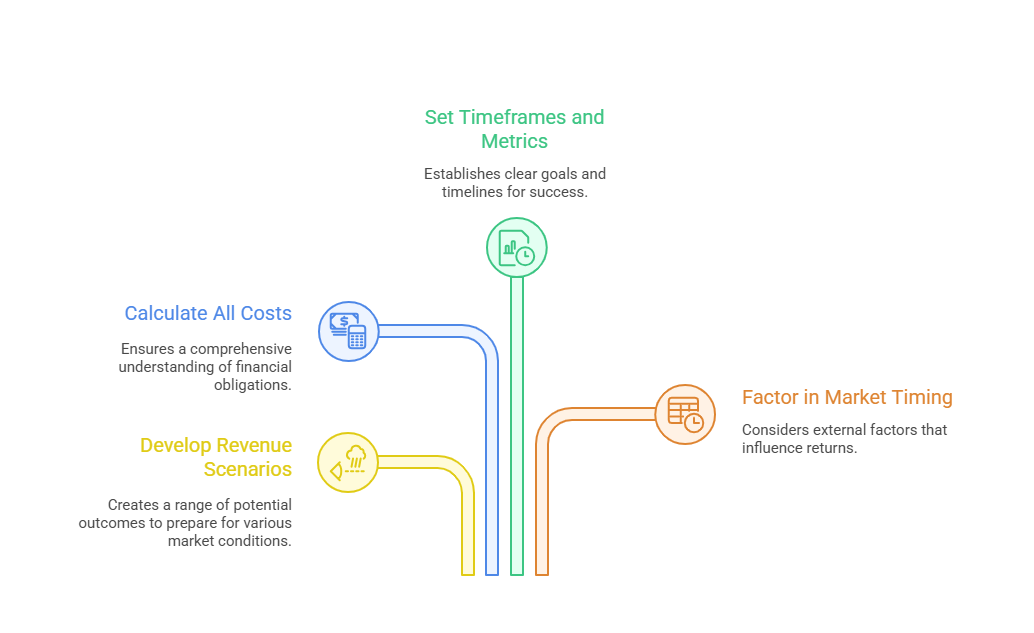When you're running a business, new opportunities seem to pop up everywhere. But here's the thing: not every opportunity is worth pursuing. Knowing how to evaluate new business opportunities can make the difference between strategic growth and costly mistakes. Whether you're considering expanding your product line, entering new markets, or pivoting your business model, a structured evaluation process helps you make informed decisions that align with your goals and resources.
Smart business owners understand that opportunity evaluation isn't just about gut feelings. It requires careful analysis of market conditions, competitive landscapes, and financial projections. The right approach can help you identify ventures that offer genuine potential for growth while avoiding those that might drain your time and capital.
Essential Tips for Customer-Centric Opportunity Assessment
Essential tips for customer-centric opportunity assessment can transform how you approach new ventures. Your customers hold the key to identifying which opportunities might actually succeed in the marketplace.

- Focus on solving real customer problems. The most successful opportunities typically address genuine pain points that your target audience faces regularly. Research what frustrates your customers and look for gaps where solutions don't currently exist.
- Validate demand before committing resources. Test your opportunity concept with actual customers through surveys, focus groups, or small pilot programs. This approach helps you gauge real interest rather than relying on assumptions about market needs.
- Analyze customer behavior patterns and preferences. Understanding how your customers make purchasing decisions, what features they value most, and how they prefer to engage with businesses can guide your opportunity evaluation process and increase your chances of success.
Building Your Competitive Analysis Framework
Building your competitive analysis framework helps you understand where your opportunity fits within the existing market landscape. This systematic approach reveals potential challenges and advantages before you invest significant resources.
- Map out direct and indirect competitors currently serving your target market. Look beyond obvious competitors to include alternative solutions that customers might choose instead of your proposed offering.
- Evaluate competitor strengths and weaknesses in areas like pricing, customer service, and market positioning. This analysis might reveal opportunities where you can differentiate your approach or identify areas where competition could be too intense.
- Monitor competitor responses to market changes and new entrants. Understanding how established players typically react to competition can help you anticipate challenges and develop strategies to maintain your market position.
Strategic Analysis Techniques for Opportunity Evaluation
Strategic analysis techniques for opportunity evaluation provide the structure needed to make objective decisions about potential ventures. These proven methods help you break down complex opportunities into manageable components.
- Conduct regular SWOT analyses to identify internal capabilities and external market conditions. This framework helps you assess whether your business has the strengths needed to capitalize on specific opportunities while understanding potential threats.
- Use stakeholder analysis to understand all parties who might be affected by your new venture. Consider employees, customers, suppliers, and partners to ensure your opportunity aligns with broader business relationships and objectives.
- Break down large opportunities into smaller, achievable milestones. This approach allows you to test assumptions gradually and adjust your strategy based on real-world feedback rather than committing everything upfront.
ROI Forecasting Methods That Actually Work

ROI forecasting techniques that actually work help you estimate the financial potential of new opportunities with reasonable accuracy. While predictions aren't perfect, structured approaches can guide your investment decisions.
- Develop conservative, realistic, and optimistic revenue scenarios. Create multiple projections based on different market conditions and adoption rates. This range helps you understand potential outcomes and prepare for various possibilities.
- Calculate all costs including initial investment, ongoing expenses, and opportunity costs. Many businesses underestimate the true cost of pursuing new opportunities, so include everything from staff time to marketing expenses.
- Set specific timeframes for measuring returns and establish clear metrics for success. Define what constitutes acceptable ROI for your business and determine realistic timelines for achieving these returns.
- Factor in market timing and seasonal fluctuations that might affect revenue projections. Consider external factors that could influence when and how quickly you might see returns on your investment.
Time and Cost Assessment Strategies
Time and cost assessment strategies help you understand the true investment required for new opportunities. Accurate estimates prevent budget overruns and timeline disappointments that can derail promising ventures.
- Create detailed project timelines that include testing phases, development periods, and market launch activities. Break down major milestones into smaller tasks to identify potential bottlenecks and resource constraints.
- Estimate both direct costs and indirect expenses including staff time, training, and system integration. Hidden costs often make opportunities less attractive than they initially appear, so comprehensive budgeting is essential.
- Build in buffer time and contingency funding for unexpected challenges or delays. Most new ventures encounter surprises, so planning for additional time and money can prevent major setbacks.
- Compare resource requirements against your current capacity and competing priorities. Ensure you have adequate resources to pursue the opportunity without compromising existing operations.
Technology Integration and Innovation Factors

Technology integration and innovation factors play an increasingly important role in opportunity evaluation. Modern businesses must consider how technological requirements and capabilities affect their ability to succeed with new ventures.
- Assess whether your current technology infrastructure can support the new opportunity or requires significant upgrades. Consider both immediate needs and future scalability requirements to avoid costly system changes later.
- Evaluate the learning curve and training requirements for new technologies or processes. Factor in the time and cost needed to bring your team up to speed on any new systems or approaches the opportunity might require.
- Consider how emerging technologies might disrupt your opportunity or create competitive advantages. Stay informed about industry trends that could affect the long-term viability of your venture.
- Determine whether technology integration enhances customer experience or simply adds complexity. Focus on innovations that genuinely improve value for your customers rather than technology for its own sake.
Evaluating new business opportunities doesn't have to be overwhelming when you have the right framework in place. By focusing on customer needs, conducting thorough competitive analysis, and using structured assessment techniques, you can make confident decisions about which opportunities deserve your time and investment.
Remember that opportunity evaluation is an ongoing process, not a one-time decision. Market conditions change, customer preferences evolve, and new competitors emerge. Regular reassessment of your opportunities helps ensure you stay on track and can adjust your strategy when needed.
The key is finding the balance between thorough analysis and timely action. While you want to make informed decisions, you also don't want to miss good opportunities while you're still analyzing. Start with the framework that makes sense for your business, and refine your approach as you gain experience evaluating different types of opportunities.

.png)






